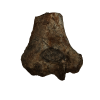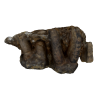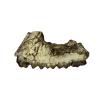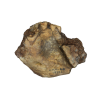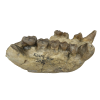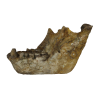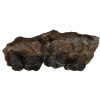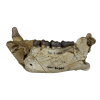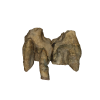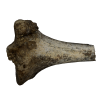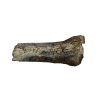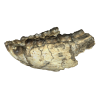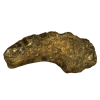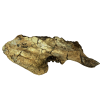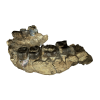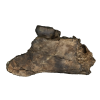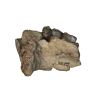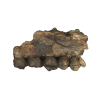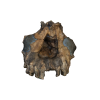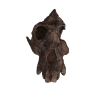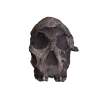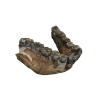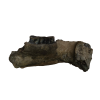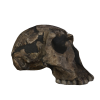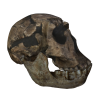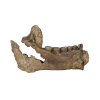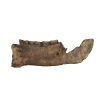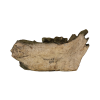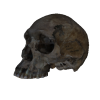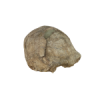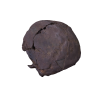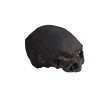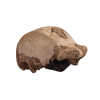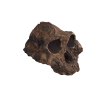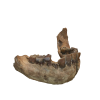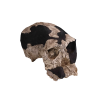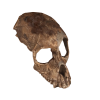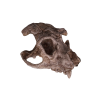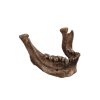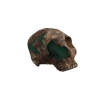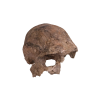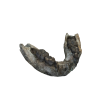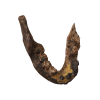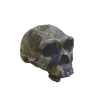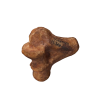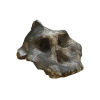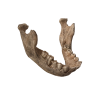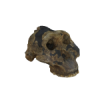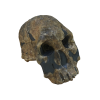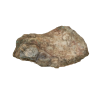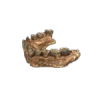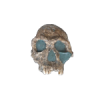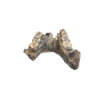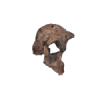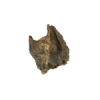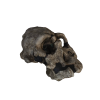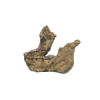It is said that the last two weeks of a field season is when the best fossils are found! This was the case in 1999 when fossil hunter Justus Edung spotted a scrappy piece of the upper jaw at a site called Lomekwi, LO5. The field team was spending the final day of the 1999 field expedition at that site. Because the recovery of hominins at Lomekwi had been largely rather disappointing, the plan was to then move back to the east side of the lake to reprospect the sites there. The fossil was in terrible shape as it had been preserved in a clay substrate. Clay expands and contracts as it soaks and dries during wet and dry seasons. This causes the substrate and its contents to crack, so fossils found in clays are often cracked and broken. Careful excavation by Meave Leakey led to the recovery a fragile and distorted cranium, which was then cleaned in the museum, over a period of nine months by Christopher Kiarie, before it could be studied and compared to other hominids from this age. This specimen is important as it provides evidence of diversity in the hominin fossil record extended further back in time over 3 million years. It is a more likely ancestor for Homo rudolfensis (KNM-ER 1470) than Australopithecus afarensis is. It was named Kenyanthropus in recognition of the contribution that Kenya has made to the hominin fossil record and platyops because of the very flat appearance of its face.
|
Kenyanthropus platyops
KNMWT 40000 Age approx. 3.50 Million Years
Digital Capture: Photogrammetry 0 Comments Order: Primates Family: Hominidae Tribe: Hominini Genus: Kenyanthropus Species: platyops Element: Cranium Locality: Lomekwi, West Turkana Year of Discovery: 1999 Other Fossils to View |



